Rochia nilotica (Linnaeus,
1767)
100mm or more
Rochia
nilotica is abundant on hard substrate on intertidal, lagoon, pinnacle
and seaward reefs at Kwajalein, but that has not always been the case. Despite
its current abundance, this species is not native to the Marshall Islands, but
was intentionally introduced by man to establish a commercial fishery. According
to Gillett
(2002), the first recorded introductions to the Marshalls were in 1939 when
separate shipments from Chuuk and Palau were made to Jaluit Atoll. From these
two small events, the species has spread and become the most abundant large
gastropod in the Marshall Islands. Sometimes called the "commercial top
shell," Rochia nilotica (formerly in the genus Trochus),
has a thick layer of mother-of-pearl beneath the outer shell layer, which can
be exposed by carefully treating the shell with acid. Shells are harvested in
some places to produce mother-of-pearl buttons. Although I have not heard of
any button industry in the Marshalls, because of the commercial potential, Kwajalein
authorities at the army base have placed Rochia nilotica in a protected
status to keep it from being collected, a rather ludicrous situation since protection
is usually reserved for native threatened species and not for abundant introduced
exotics. The species is gathered to a certain extent by Marshallese residents
for food.
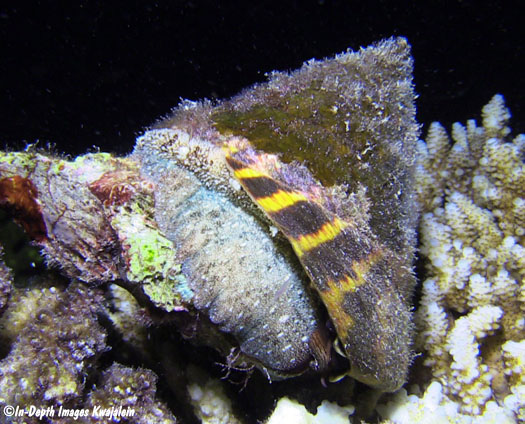
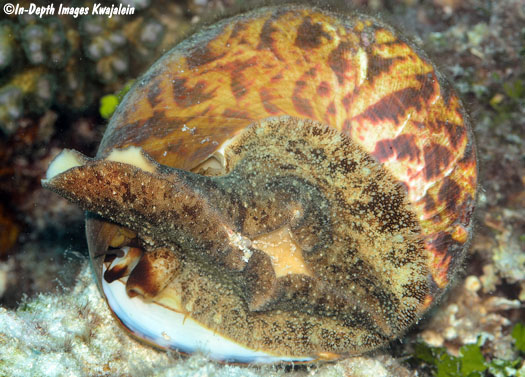
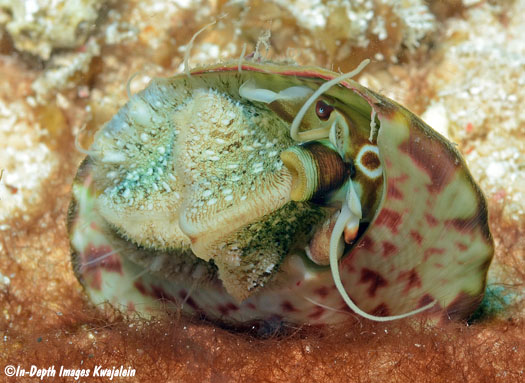
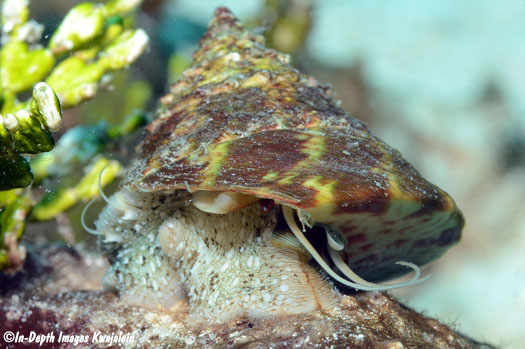
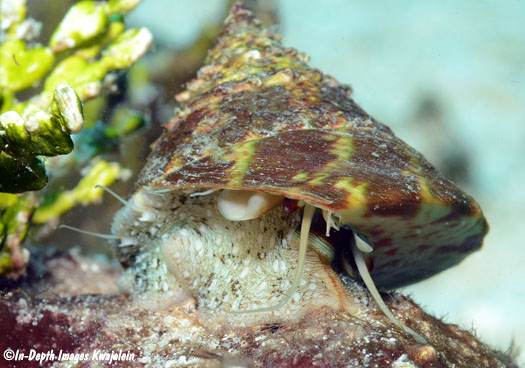
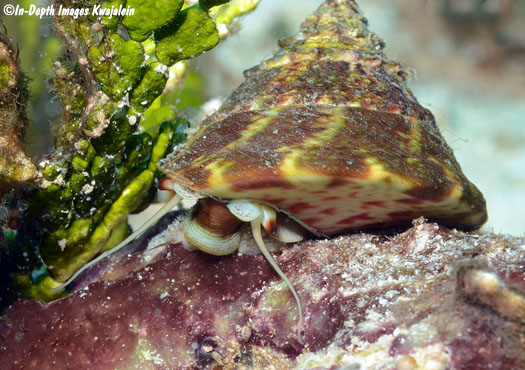
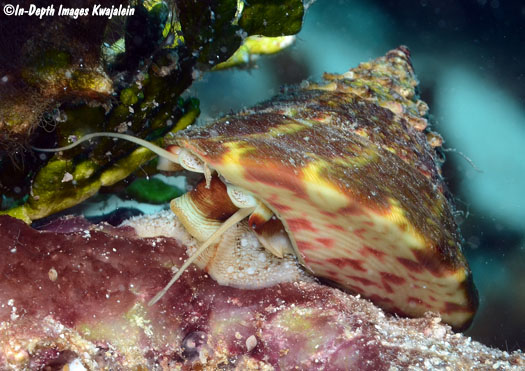
Four shells exposed on the intertidal
reef flat.
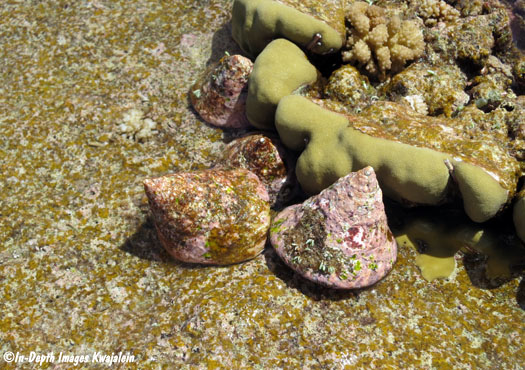
Spawning. These animals release large numbers of eggs and sperm, and fertilization
takes place in the surrounding water.
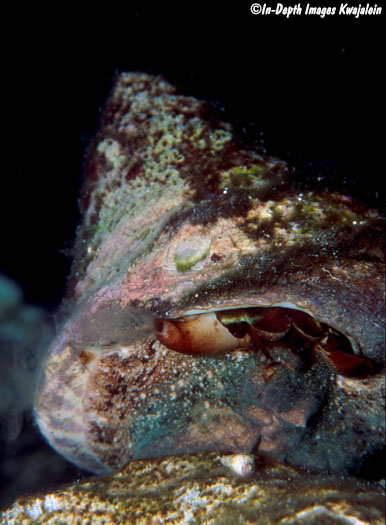
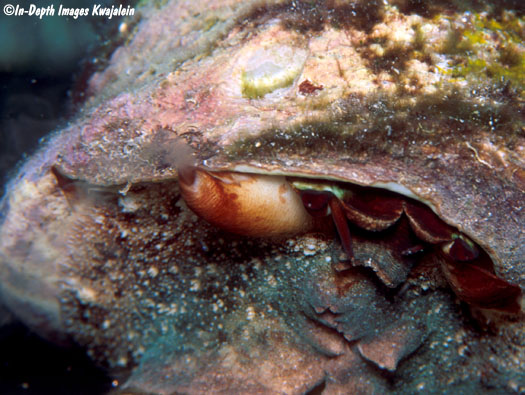
One animal that has appreciated
the introduction of Rochia nilotica to the Marshalls is apparently
the octopus. It is common to find piles of old or new empty Rochia nilotica
shells piled up in what seem to be octopus dining areas. It is as though the
octopus gathers shells from different places and takes them to the same place
to eat. Sometimes it is clear the feeding area has been in use for some time,
since more recently emptied shells are at the top of a pile of shells that appear
to gradually get older the deeper they are in the pile.
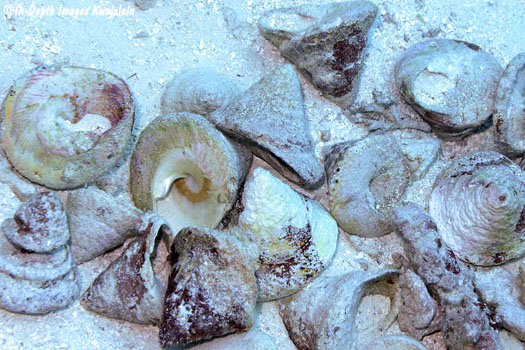
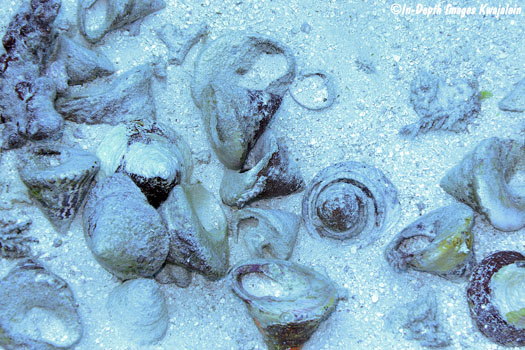
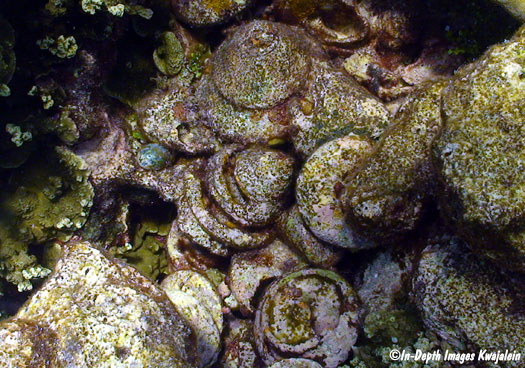
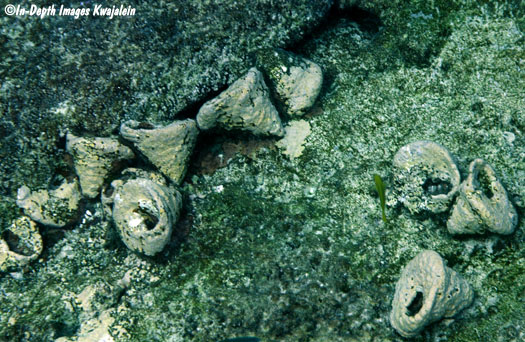
66.0mm empty shell.
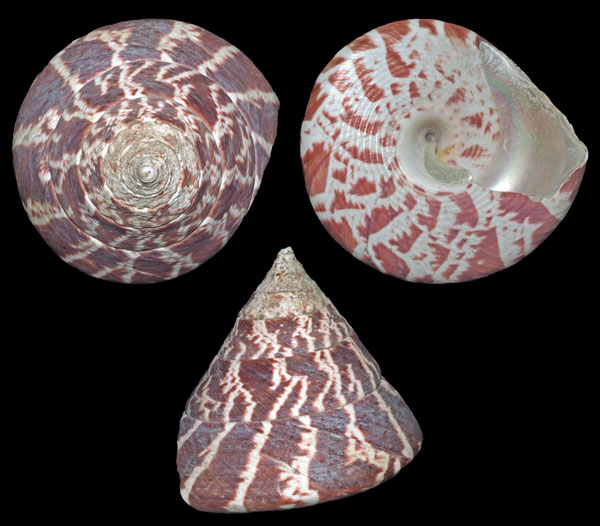
Created
26 April 2017
Updated 27 December 2023
Return to
Tegulidae list
Kwajalein
Underwater home















